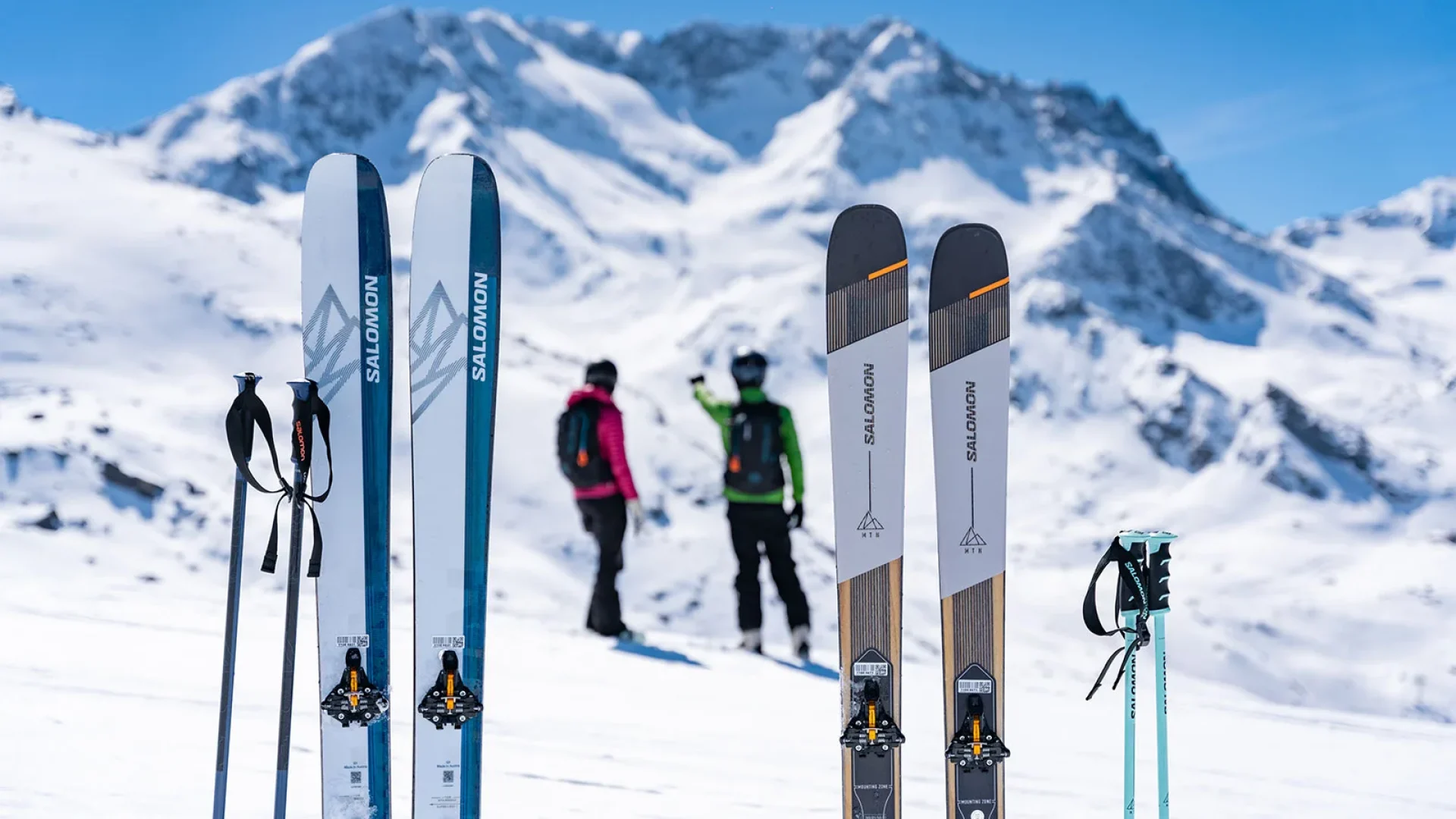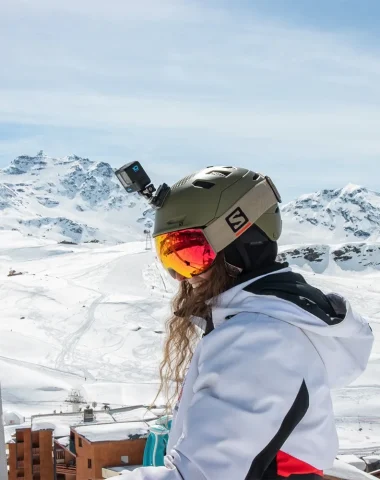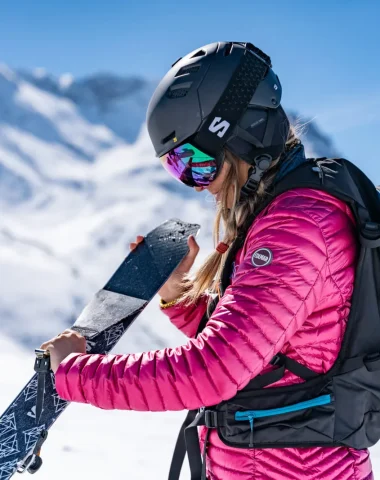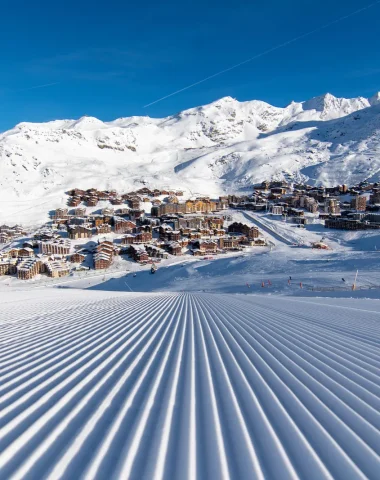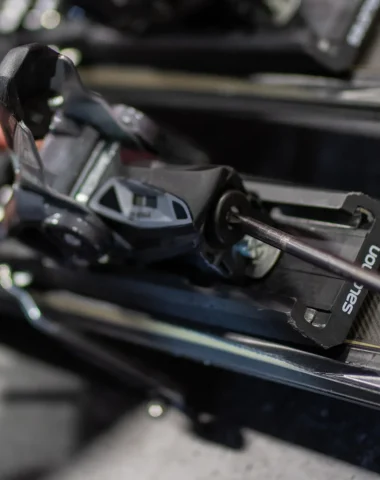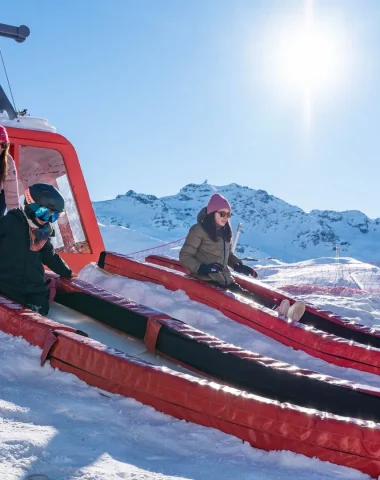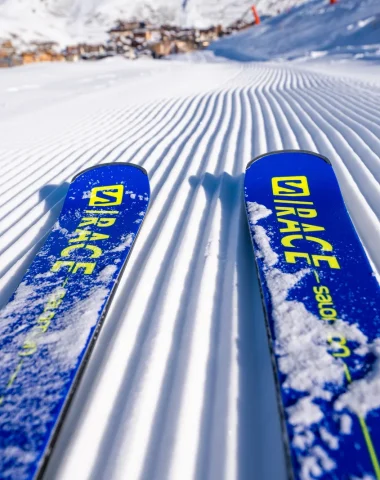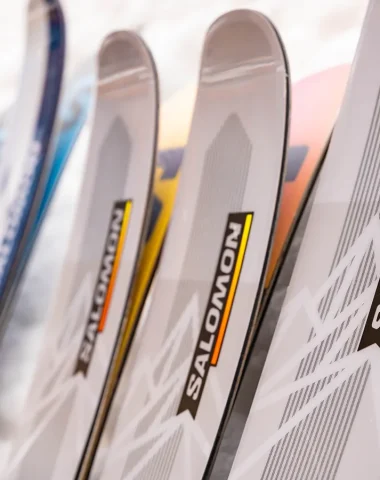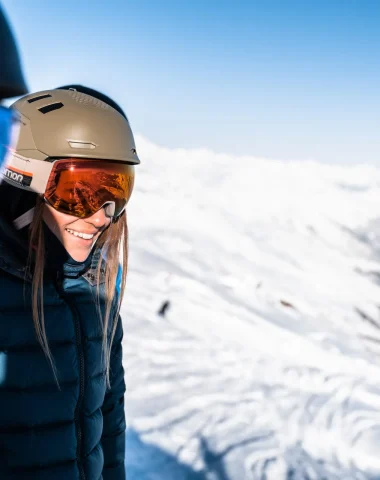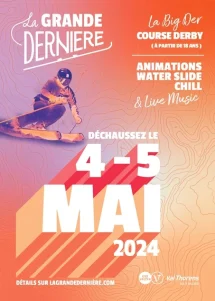Second article devoted to the practice of ski touring, today we are going to focus on skis and bindings. What weight, what length… all the answers to your questions are here!
We saw it in our article on getting started with ski touring, the weight of the equipment is very important. The construction of skis is therefore different from that of alpine skis and the selection criteria are as well.
To choose your skis carefully, you must start by knowing what type of practice interests you.
Versatile skis
You want to be able to go everywhere throughout the season. You are looking for a ski that will be comfortable in all snow conditions, light enough to go up and reassuring and even fun on the way down.
Each manufacturer now offers versatile touring skis which, thanks to the use of lightweight wood cores and composite materials, are light (around 2,5kg per pair) and easy to ski.
With a waist width of approximately 80 to 90mm, they also provide good flotation in fresh snow. In addition, the appearance of Rocker technology in the tip a few years ago made it possible to improve the lift of the ski in powder snow while making it easier to enter curves.
I advise you to choose approximately -5 cm to 0 cm in relation to your height, you will be more comfortable in conversions, and in difficult terrain (forest, narrow paths, etc.)
Examples of versatile touring skis: Dynastar Vertical Bear, Black Crows Ova Freebird, Trab Tour Rando …



To complete your pair of skis, you have the choice between two types of bindings: detachable, or insert bindings also called Low tech (LT) and which are the lightest on the market.
The latest generations of insert bindings combine lightness and safety, all for around 150g -200g. The particularity of Low Tech bindings is that the heel is pivotable, and has several wedges to relieve the calves when climbing!
Example of Low Tech bindings: G3 ION 10
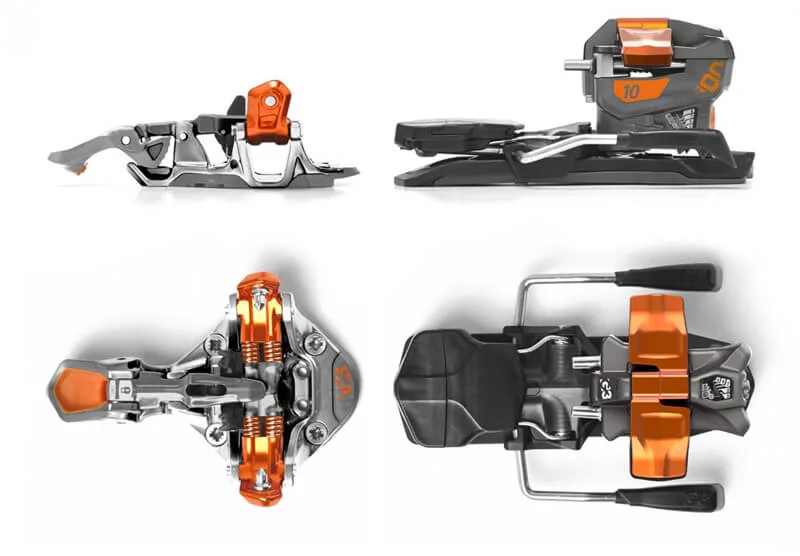
Some even have ski stops, providing additional comfort when putting on shoes, or even when taking off your shoes since the ski will not roll down the slope on its own!
Be careful though, low-tech bindings require compatible shoes. Most recent shoes are now equipped with these inserts, but be careful when buying second-hand equipment!
Racing/Fitness skis
You are a running or road cycling ? Do you like to exceed your endurance limits and take a good dose of endomorphin? There is equipment for you!
These are the lightest skis on the market and are often from competitions. True engineering jewels, they use the best materials and know-how of the moment.
The use of carbon is pushed to its highest level here and certain pairs of skis weigh less than 1,5kg like the famous Dynafit DNA (700g per ski!) or Trab Gara Cup. Obviously, these skis are fragile and require careful maintenance to maintain their level of performance.
These are also thin skis with less than 70mm at the waist and a classic camber. To be reserved for good skiers because with such a low weight, unusual materials and great rigidity, the descent is demanding and the sensations are often... Disturbing!
Competitors choose a ski length of approximately -10 cm to -20 cm in relation to their height because every gram is important.
If you are more into a fitness approach, you can find skis that are a little less extreme than racing models while still maintaining a good level of performance.
Choose a ski whose weight is between 2kg and 2,5kg per pair with a waist size of approximately 72 to 80mm. For length, opt for skis between -10 cm to 0 cm in relation to your height.
Example of fitness skis: Trab Maestro, Dynafit Carbonio 89
To maintain their performance, these skis must be combined with very light bindings. Most competitors also skip ski stops or any superfluous elements. Here, for example, are binding models that only flirt with the 100g mark: Dynafit Low Tech Race 2.0, Plum Race 99…
Finally, on this range, each gram is expensive so be careful about spending... even if passion often wins!
Freerando skis
A strong trend in recent years, it is the end of difficult portages to find a remote off-piste route. In just a few minutes, it is now possible to make your way off the beaten track without sacrificing performance on the descent.
These skis offer optimal lift and stability at a low weight.
I say "content" because with 100mm on the waist (or more), you should not expect a miracle solution and keep in mind that it is a question of making approaches or hikes with reduced elevations.
For this “freeride/freerando” category, I recommend skis from 0 cm to +10 cm in relation to your height.
Example of freerando skis: Rossignol Sky 7, Volkl VTA 88…

Don't hesitate to combine this type of ski with sturdy bindings. To cope with jumping rocky bars and muscular driving, it is preferable to count on bindings that are up to the task. For several seasons, manufacturers have been offering dedicated equipment: Dynafit Beast, Marker Kingpin 13, Salomon Shift…
You can also count on plate bindings, in which the boot will be held in the same way as with traditional alpine bindings. On the other hand, the weight on the way up will obviously not be the same...
Example of freerando plate binding: Marker Tour f10
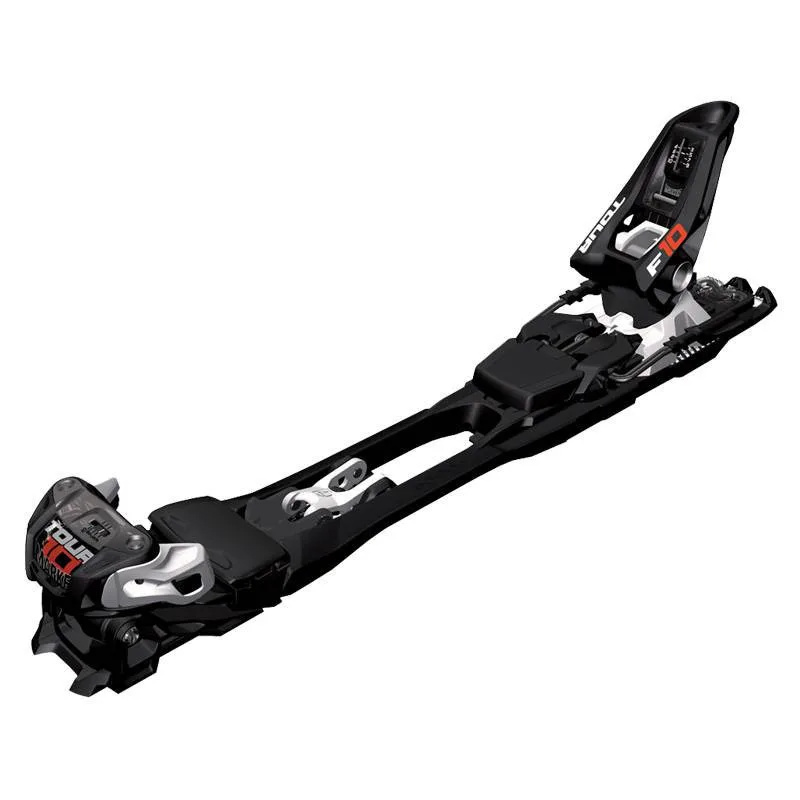
That's the end of this little buying guide, remember that you have to adapt these tips to each person, a light skier may therefore prefer skis that are a little shorter than indicated. Also consider calling on a professional and rent before you buy if you hesitate.
I hope to have helped you find a pair of skis to please you this season and come back and post your outing photos on our social media pages Val Thorens !
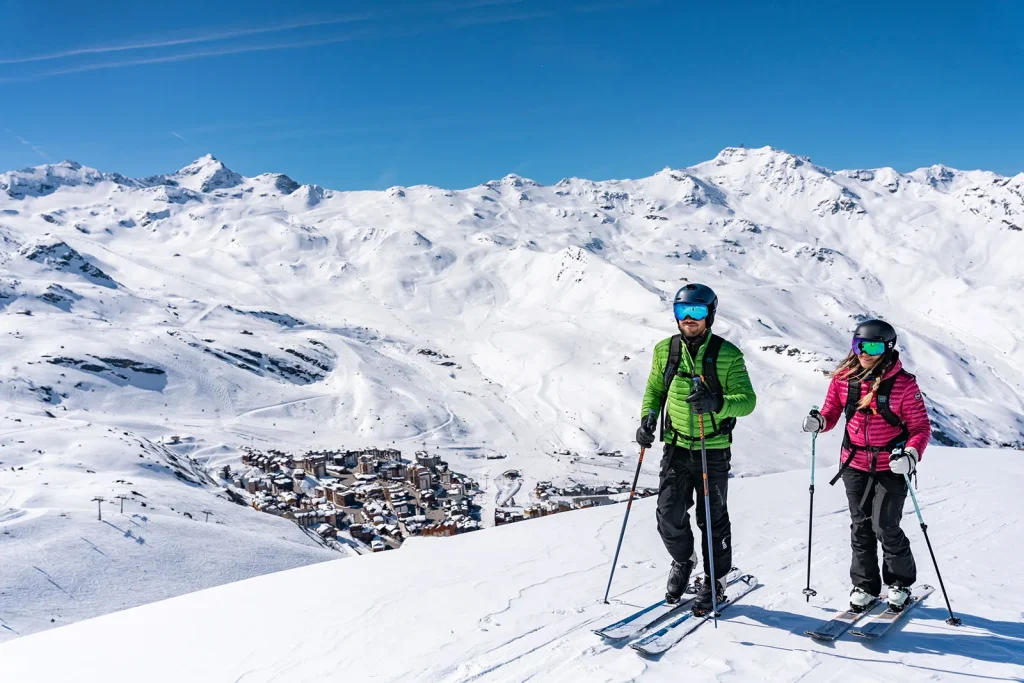
Themes


